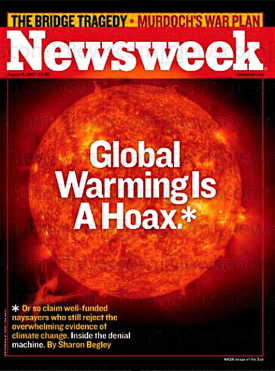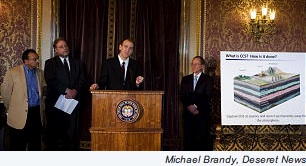Carbon Science & Engineering Research Group
This website is undergoing major renovations and many of the links are disabled. We appreciate your patience during this process. If you have any questions or need information about any of the projects, please contact Dr. McPherson.
If you have a question or problem with the site, please contact the webmaster.
Carbon Capture and Sequestration
Global temperatures are increasing. Atmospheric CO2 concentrations are increasing. New carbon management legislation and initiatives are based on the assumption that increased CO2 levels are a major cause of global warming.
Several ways of reducing CO2 emissions and CO2 levels in the atmosphere include: improved efficiency in power generation by upgrading existing plants, higher efficiency in all new plants, relying more on renewable energy and nuclear-generated power, distribution of energy consumption among other resources and finally, carbon capture and storage (CCS). Of all emissions reduction mechanisms, CCS is projected to provide the largest contribution to emissions reduction in the near-term (~decade time scale).
What is carbon capture and sequestration?
Carbon capture and sequestration (CCS) begins with capture of CO2 at its source, such as a coal fired power plant, transporting the CO2 to a location where it can be sequestered or stored safely away from the earth's atmosphere and oceans.
Three types of CO2 sequestration are under way: terrestrial sequestration, geologic sequestration, and mineralization. Geologic sequestration is storage of CO2 within geological formations under the earth's surface. Oil, gas unmineable coal and saline water reservoirs are those best suited for CO2 sequestration.

Currenlty, over 150 projects involving CO2 sequestration are underway in North America alone.
Where do we come in?
Click here to find out!



